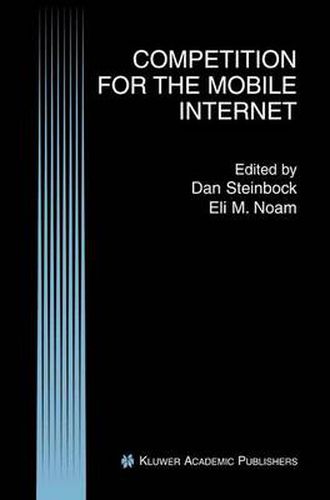Readings Newsletter
Become a Readings Member to make your shopping experience even easier.
Sign in or sign up for free!
You’re not far away from qualifying for FREE standard shipping within Australia
You’ve qualified for FREE standard shipping within Australia
The cart is loading…






This title is printed to order. This book may have been self-published. If so, we cannot guarantee the quality of the content. In the main most books will have gone through the editing process however some may not. We therefore suggest that you be aware of this before ordering this book. If in doubt check either the author or publisher’s details as we are unable to accept any returns unless they are faulty. Please contact us if you have any questions.
Billions of dollars (and euros, yen, and other currencies) have been spent by wireless services providers to acquire the radio frequency spectrum needed to offer so-called Third Generation (3G) mobile services. These services include high-speed data, mobile Internet access and entertainment such as games, music and video programs. Indeed, as voice communications is substituted by data communications, software - rather than terminals or networks - has become the driver of the wireless industry. Meanwhile, services are becoming increasingly specialized. Why has the road to multimedia cellular been so difficult? The devil is in the details. The Columbia Institute for Tele-Information (CITI) has been exploring these fundamental questions in its Mobile Internet Project, vis-a-vis ongoing research, a conference, and workshops, including experts from wireless service providers, equipment manufacturers, application software developers, investors and government officials. Competition for the Mobile Internet is the culmination of these efforts. It explores the twin drivers of mobility and the Internet. Focusing on the industry transformation, this book stresses three central perspectives: public policy debate, industry and market developments, as well as industry perspectives. It explores these perspectives through the collaboration of academic research, policy studies, and industry perspectives.
$9.00 standard shipping within Australia
FREE standard shipping within Australia for orders over $100.00
Express & International shipping calculated at checkout
This title is printed to order. This book may have been self-published. If so, we cannot guarantee the quality of the content. In the main most books will have gone through the editing process however some may not. We therefore suggest that you be aware of this before ordering this book. If in doubt check either the author or publisher’s details as we are unable to accept any returns unless they are faulty. Please contact us if you have any questions.
Billions of dollars (and euros, yen, and other currencies) have been spent by wireless services providers to acquire the radio frequency spectrum needed to offer so-called Third Generation (3G) mobile services. These services include high-speed data, mobile Internet access and entertainment such as games, music and video programs. Indeed, as voice communications is substituted by data communications, software - rather than terminals or networks - has become the driver of the wireless industry. Meanwhile, services are becoming increasingly specialized. Why has the road to multimedia cellular been so difficult? The devil is in the details. The Columbia Institute for Tele-Information (CITI) has been exploring these fundamental questions in its Mobile Internet Project, vis-a-vis ongoing research, a conference, and workshops, including experts from wireless service providers, equipment manufacturers, application software developers, investors and government officials. Competition for the Mobile Internet is the culmination of these efforts. It explores the twin drivers of mobility and the Internet. Focusing on the industry transformation, this book stresses three central perspectives: public policy debate, industry and market developments, as well as industry perspectives. It explores these perspectives through the collaboration of academic research, policy studies, and industry perspectives.